This is the 67th in a series of posts on the Fujifilm GFX-50S. The series starts here.
I reported here on some inaccurate and inconsistent behavior with the Fuji GFX 50S and the 120 mm f/4 macro lens at some apertures. Yesterday, using a different test protocol on the 110 mm f/2 lens, I found that using zone focusing instead of spot focusing improved things greatly. So I went back to the 120/4 and reran my tests using yesterday’s protocol, which is:
- ISO 100
- AF-S
- Spot and Zone both tested
- Spot set on the ROI, which included a bit of the zone plate.
- Zone set the same plate which included all the zone plate and some or all of several squares.
- Release priority: focus
- Pre-trigger: 500 milliseconds, which was long enough for focus confirmation green square to flash and confirmation beep to sound in all cases
- Manual exposure
- Wescott LED panels set to 5500 K.
- Electronic shutter
- Cognisys computer-driven focusing rail
- 32 exposures 4 mm apart
- Target distance at the center of the rial, about 3.3 m. I just eyeballed this distance, and it looks like the real distance is actually a bit farther than that.
- RAF converted to DNG in Adobe DNG Converter
- DNG exported as TIFF mosaiced file in dcraw (document mode)
- TIFFs cropped and raw channels selected in Matlab program
- MTF50 of cropped TIFFs measured with MTF Mapper
- Data assembled in Matlab
- Data plotted in Excel
Here’s the full frame from a sample image, with the ROI marked in red:
The spot mode data for the top green raw channel, Gr:
What you are looking at is a standard measure of sharpness, MTF50, as measured in cycles per picture height (cy/ph) at the whole stops from f/2 through f/11. The orange line is the average, or mean, of the 32 exposures at each aperture. The gray line is that average, plus the standard deviation for the 32 exposures, and the blue line is the average minus that standard deviation. If the data were Gaussian (which it isn’t) two thirds of the values would be between the gray and the blue lines.
For comparison, here’s a run of 100 images 1.6 cm apart with the focus fixed using MF at f/2.8, the sharpest aperture for this lens, and the one that seems to give the AF algorithm the most trouble:
You can see that because of the lens’ longitudinal chromatic aberration (LoCA), you can’t get the best sharpness in each raw channel at the same subject distance with the lens focused the same way. The right thing for the AF software to do in that case is to focus on the green channel, since that’s the one we mostly use to gauge sharpness and, not coincidentally, there are twice as many green and red or blue pixels. If you look at the f/5.6 point on the top graph, you’ll see that that is indeed what the AF mechanism in the GFX did.
Looking at the other two channels’ AF performance, we can see that they suffered accordingly, which is proper:
This is more consistent performance than I achieved with my sharper razor-blade target in the previous AF test of the 120. It also shows that the lens can automatically focus with about the same accuracy at the best manual focusing, at least with this admittedly pretty easy target. I should point out that besides the target being different, the firmware in the camera is different, having been upgraded to 1.01. I can’t tell you which of these changes explains the different results.
Let’s look at zone mode:
Zone mode is even more consistent than spot mode.
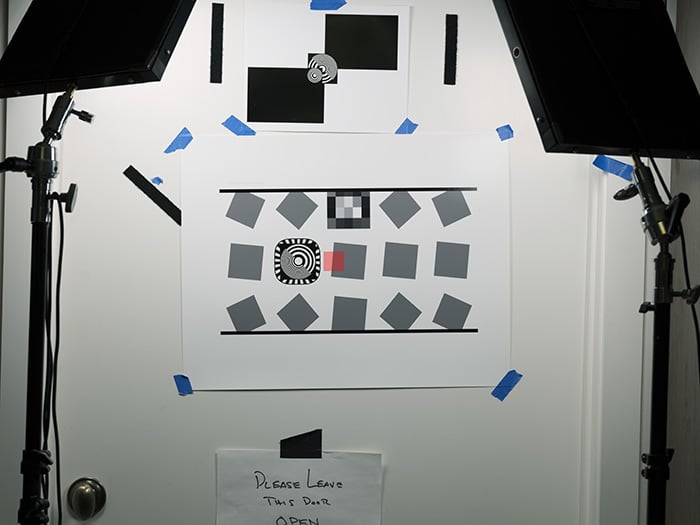
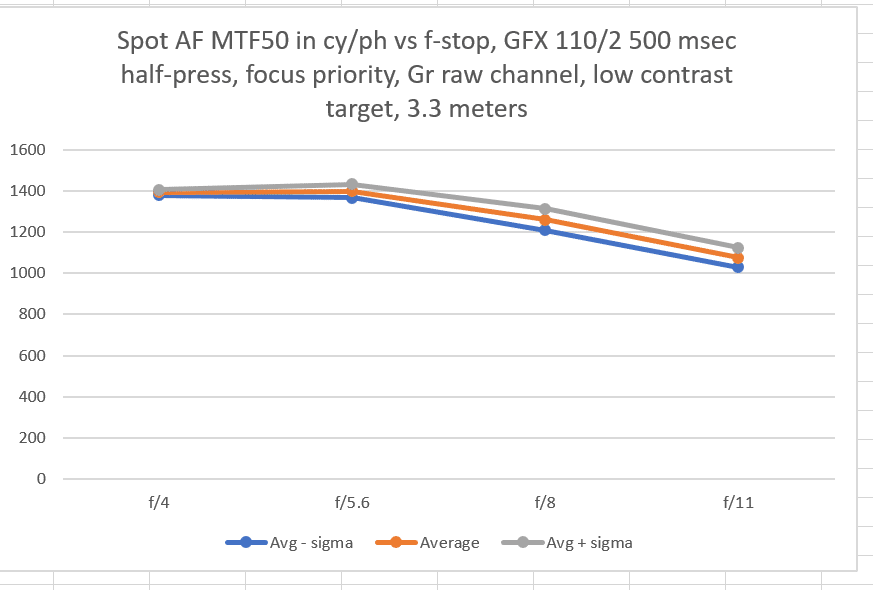
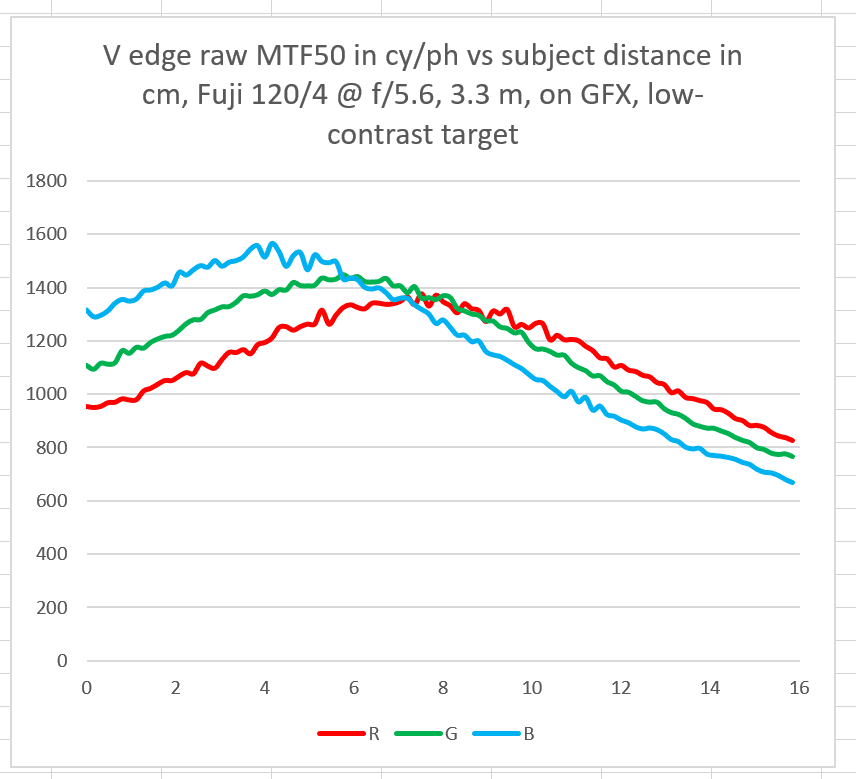
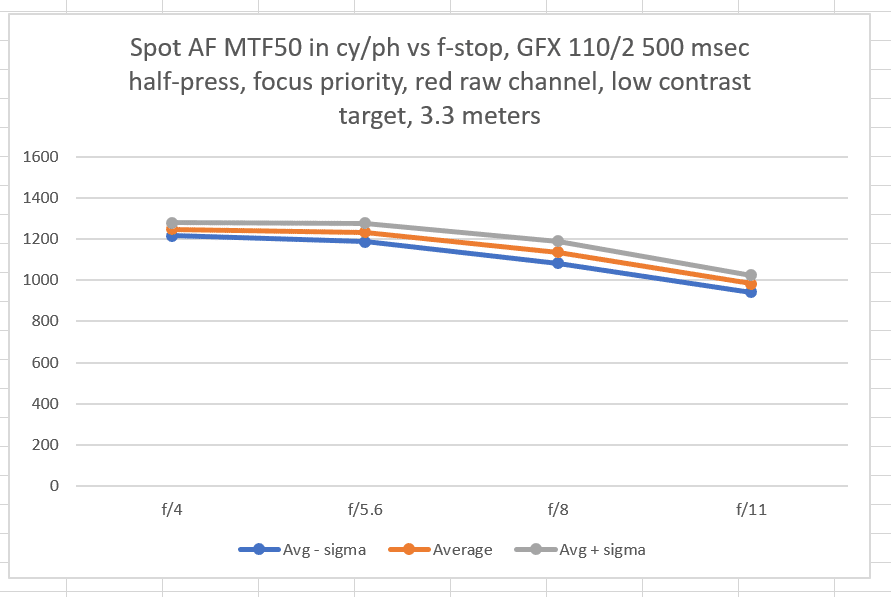
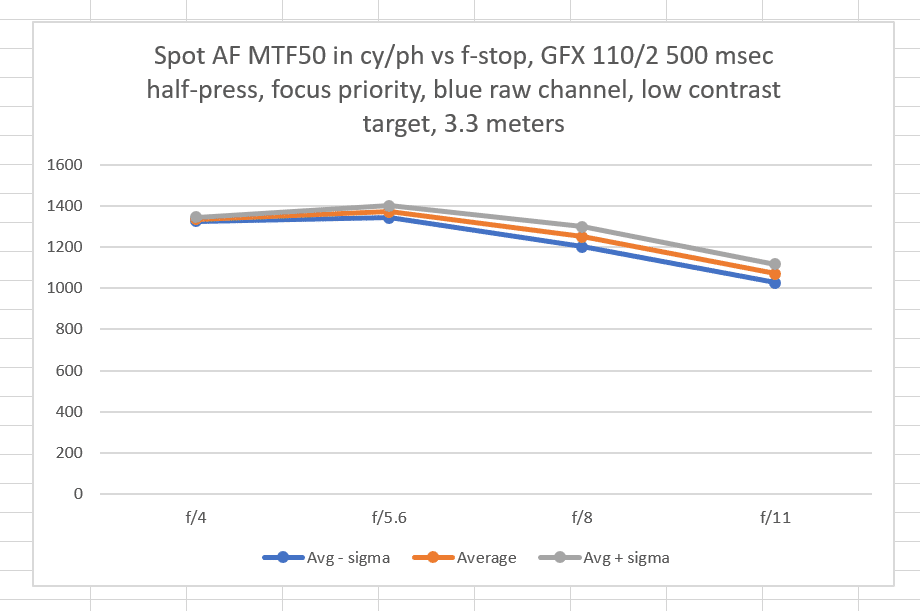

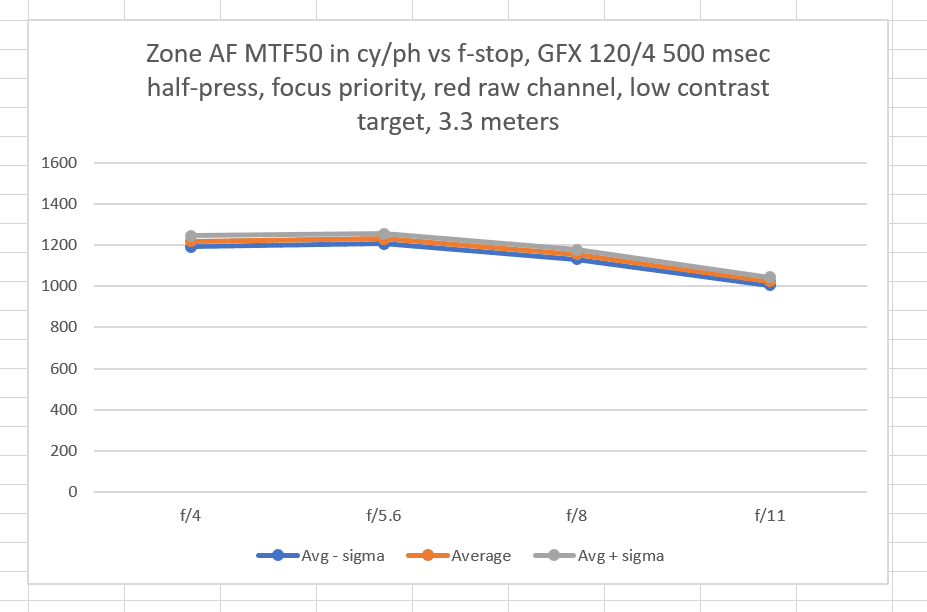

[…] The Last Word – Fuji 120/4 AF performance on GFX 50S revisited […]